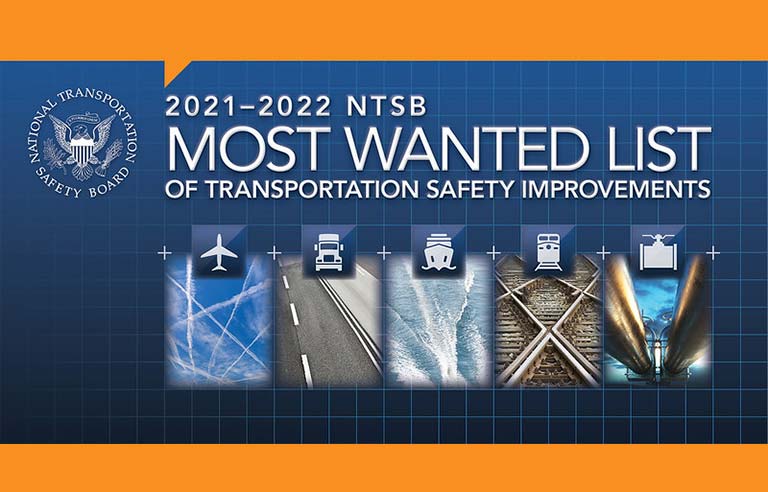Safety is in the Small Stuff: Why Part 135 Operators Need a Formal SMS

August 23, 2021
Every two years, the National Transportation Safety Board (NTSB) issues their “Most Wanted List” (MWL). The list highlights transportation safety improvements that it believes are needed to prevent accidents. The 2021-22 MWL for aviation featured a desire for Safety Management Systems (SMS) for all “revenue passenger-carrying aviation operations.”
The focus of the 2021-22 WML expands upon the FAA 2015 requirement for SMS to be used by those flying under Part 121 authority. The NTSB, in issuing this “most wanted” wrote, “Although we have seen some voluntary adoption of SMS programs, a vast majority of operators continue operating without an SMS in place. It is time more got on board. The risk to the flying public is too great not to.” In fact, the NTSB often identifies the lack of an SMS as a safety issue during Part 135 accident investigations as well. Requiring an SMS for Part 135 operators is often included as a recommendation to the FAA in NTSB reports.
We agree with that recommendation.
Currently, operators can develop their own standards for reporting; there is no unified requirements for reporting or mitigating safety risks. Suggestions of making SMS mandatory have, however, been met with some hesitation across the industry, due to unnecessary negative stigma surrounding reporting issues. Some operators are concerned it will interfere with safety measures they spent effort developing and are currently utilizing or be too time consuming to implement.
At AviationManuals, we don’t see the NTSB’s desire, nor the inevitable trend of the FAA requiring operators to have an SMS, as necessarily a disruptive development. It provides an opportunity for operators to streamline all the little “details” that can cost them time and money every time they fly. SMS can be a powerful tool in uncovering hidden risks that inevitably cost operators.
An SMS focuses on developing systems for managing information and risks with the goal of preventing accidents. An SMS is proactive by identifying and examining problems before they occur, helping the operator decide what level of risk is acceptable, and enabling them to create mitigations to lower those risks. The safety record of commercial airlines is due in part to the highly rigorous and systematized approach utilized to identify and mitigate potential risks. The NTSB is hoping to expand this approach to other operators in an effort to reap the same safety benefits.
We think that most operators are very good at mitigating “big risks”; it’s in part why air travel outside of commercial airlines is also very safe. At AviationManuals, we say “safety is in the small stuff,” because we know that it’s exceptionally difficult to “connect all the dots” on all the things operators have to manage, absent formalized processes and systems. That lack of clarity in understanding risks and challenges can cost operators time, money, and lead to avoidable frustration.
Here is an example:
One of the straps on a safety harness that is used when doing maintenance on the outside of the plane is frayed. The strap isn’t broken, it’s just marginal. On its own this may not be seen as a problem. Following a rainy afternoon, what if a mechanic uses that harness to service an item at a high point on the aircraft? If that mechanic were to slip and fall, instead of being kept safe by the harness, the strap’s marginal condition may allow it to snap.
The mechanic tumbles off the wing, to the tarmac, injured. For want of a marginal strap, the “battle” was lost. Your mechanic is now injured, the aircraft may now be damaged, and the situation may lead to delays or other problems. That frayed strap may not have looked like a major issue before – now it is.
Instead of the strap working to prevent an accident, it enables one. Nobody wanted the mechanic to get injured and on its face maybe the strap seemed fine, but when adding the frayed strap to the marginal conditions on the wing and the sudden stress put on the safety strap because of the mechanic slipping off the wing, the chain of events was set up to allow for the accident to happen.
Absent formalized systems, there are hundreds of combinations of “unforeseeable” incidents that can creep up if conditions are just right; that’s what SMS is designed to protect operators against.
While operators likely have their own safety measures in place, implementing a formal SMS is aimed not only at keeping the “big problems” from happening, but also at preventing “minor issues” from compounding to create events that are otherwise difficult to see.
AviationManuals has guided thousands of operators in implementing comprehensive safety systems tailored to their organization by combining policies, procedures and processes with an intuitive software platform to help identify “hidden” risks, bringing them “to light” in a way that empowers operators to be safer.
Gone are the days of paper forms and spreadsheets. These tools were great when it was all we had, but they left too many holes in the process and were too time-consuming to be really useful. Leveraging digital tools and “big data,” AviationManuals has developed software specifically designed to keep operators up to date and empower effective safety decisions without all the hassle of filling out paper forms, shuffling through a multitude of sources to find information, and trying to draw insights from a spreadsheet.
The digital platform that AviationManuals offers its clients is seamless and puts them “ahead of the curve” when it comes to identification of risks and safety management.
Operators may say, “well that’s great, but what does it cost?”
As the industry saying goes, “if you think safety is expensive, try an accident”. Ultimately, the financial investment in an SMS needs to be a part of an operator’s long-term business plan. We believe that adopting automated and digital tools to end the kluge of tools operators may be using to manage their SMS now is ultimately cost effective and delivers a positive return on their time and money.
Right now, SMS is just an NTSB most wanted item, but we anticipate that it won’t be “just that” for much longer. While there is no official date for when the FAA is going to require Part 135 Operators to have an SMS, that day is coming. Why wait until it’s mandated? These little risks are adding up right now and costing operators money, even if they don’t result in an injury or something severe. AviationManuals can get you started with perfectly tailored policies and procedures together with a digital SMS platform to embrace a positive safety culture for millions of flight miles to come.


